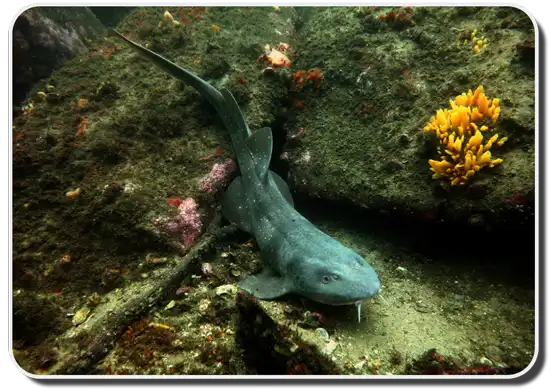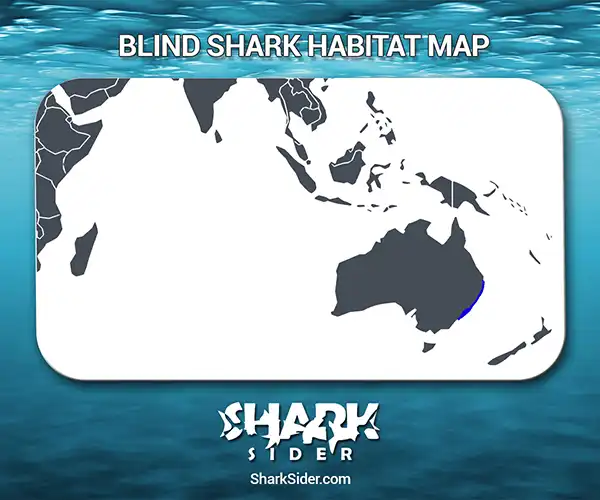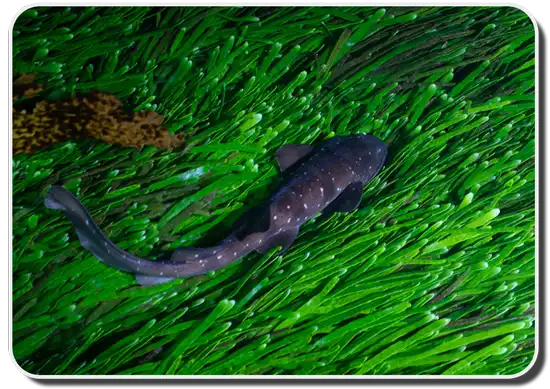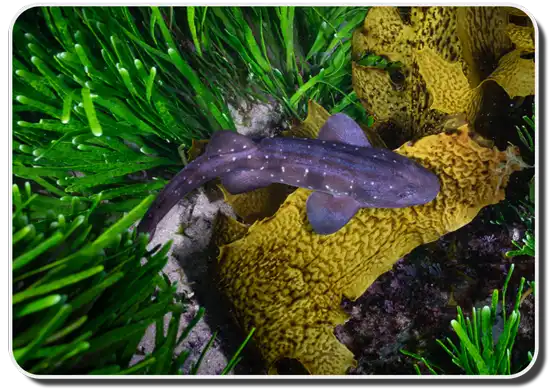Blind sharks, despite what their name indicates, are not, in fact, blind. They got their name from their tendency to retract their eyeballs and lower their thick eyelids when removed from the water.
These sharks are one of only two species in its genus, the other being the bluegrey carpetshark.

Blind Shark Scientific Classification |
|
| Kingdom | Animalia |
| Phylum | Chordata |
| Class | Chondrichthyes |
| Order | Orectolobiformes |
| Family | Brachaeluridae |
| Genus | Brachaelurus |
| Scientific Name | B. waddi |
Description
These sharks reach lengths of 3.0–3.9 ft, though most specimens tend to be much smaller. Blind sharks have stocky bodies, flat heads, and a blunt snout. The oval eyes are on top of the head, surrounded by ridges, while the nostrils are on the tip of the snout, with tiny barbels emerging from them. This shark’s mouth is connected to the nostrils with a pair of grooves. Inside the mouth, there are 32–34 rows of teeth in the upper jaw and 21–29 tooth rows in the lower one.
Blind sharks have large pectoral fins, equally sized dorsal fins, pelvic fins similar to the pectorals, an anal fin half the size of the dorsal, and a caudal fin that is 1/4th of the sharks’ total body length.
Dorsally, these sharks are different shades of brown while being much lighter on the underside. There are white specks on the bodies of these sharks. Younger sharks have dark bands on the dorsal region, which fade away as they mature.
Where do they live
Map Of The Blind Shark’s Habitat

Blind sharks have a limited distribution, with every verified specimen living off the coast of eastern Australia. Their range includes Mooloolaba in southern Queensland to Jervis Bay in New South Wales;
Behavior
Hunting
It is a nocturnal feeder, doing so via suction. A blind shark’s diet consists of bony fish and various small invertebrates like cephalopods, crabs, sea anemones, and shrimp.
 Reproductive
Reproductive
Blind sharks are viviparous, following an annual reproductive cycle. They give live birth to a litter of 7-8 pups during summer. Initially, the young sharks are 5.9–7.1 inches long. The males become sexually mature at 24 inches, while the females do so at 26 inches.
Adaptations
These sharks can live up to 18 hours out of the water, with their eyes retracting during this period.
Interactions with humans
 While mostly harmless, these sharks will bite humans if they get too close and can be challenging to detach due to their powerful jaws and suction capabilities. There have been several reports of blind sharks attaching themselves to divers’ wetsuits and only being removed after their mouths were pried open.
While mostly harmless, these sharks will bite humans if they get too close and can be challenging to detach due to their powerful jaws and suction capabilities. There have been several reports of blind sharks attaching themselves to divers’ wetsuits and only being removed after their mouths were pried open.
This shark is not fished for its meat due to its unpleasant ammonia-like taste. But it is docile enough to be kept in aquariums owned by private individuals. The IUCN has classified this shark as “Least Concern” or “LC,” as even when this fish is caught as bycatch, it is released back into the wild and is hardy enough to survive out of water for a few hours.
